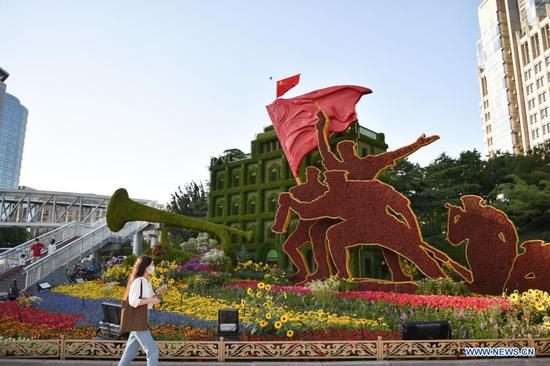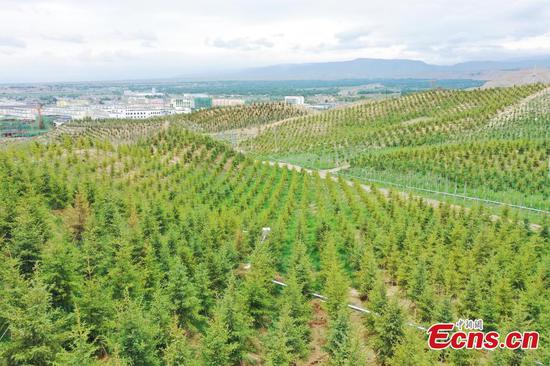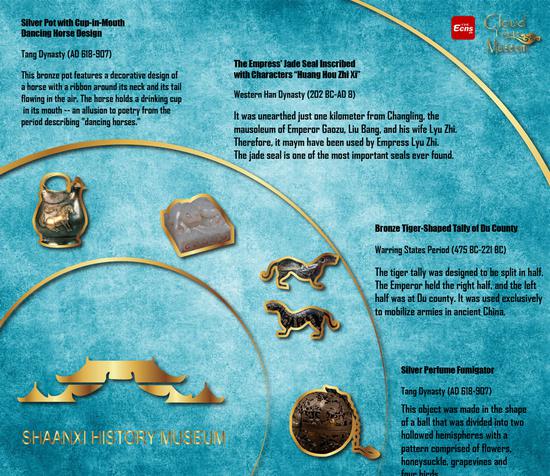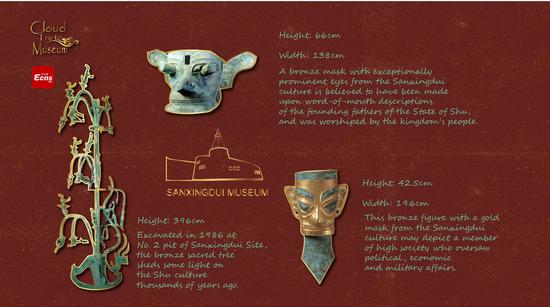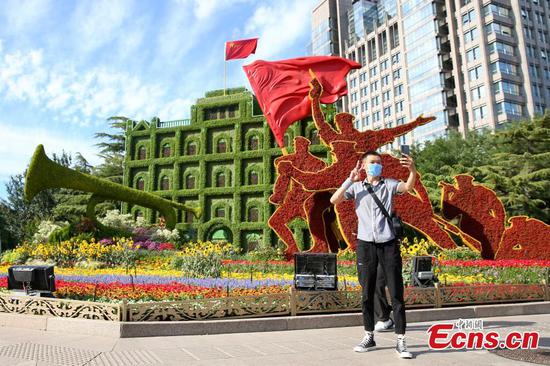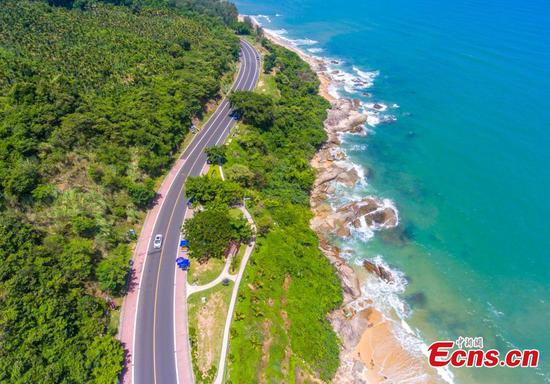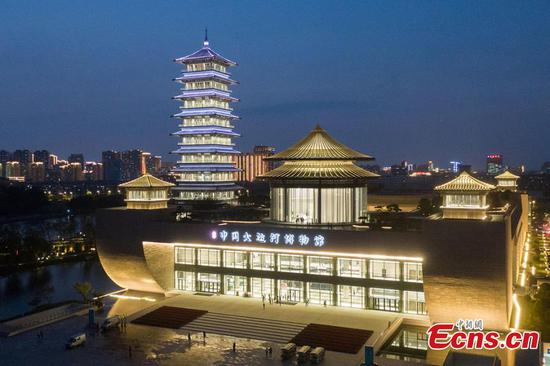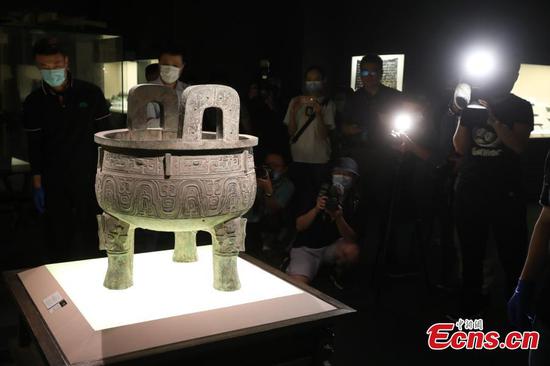Buried castle
Archaeologists are particularly interested in a 10-km section of the wall built during the Ming Dynasty in Jingbian county, northern Shaanxi province. The section is home to the Qingpingbu site, a castle ruin buried in sand.
Yu Chunlei, a researcher at the Shaanxi Institute for the Preservation of Cultural Heritage and Archaeology, said Qingpingbu was constructed in the mid-15th century. In the 1690s, an army led by Emperor Kangxi during the Qing Dynasty (1644-1911) marched past the castle, heading to war north of the Great Wall. The site was gradually abandoned following the emperor's victory.
City gates, bridges and the castle's watchtowers have been found by Yu's team, which since May last year has also worked on a Taoist temple ruin, known as Xianying Palace. The ruin, which is some 60 meters long and 25 meters wide, is considered by Yu to be a highlight of the ongoing project.
Studies of inscriptions on a stone tablet unearthed at the temple, which dates to the reign of Emperor Wanli, show the site was devoted to a local patron god. About 30 colorful earthen lifesize statues were found in the temple ruins.
Yu said: "The basic layout of this courtyard is well-preserved and the statues are exquisite. The site, which was quickly buried by sand after being abandoned, has seldom been disturbed by human activities, helping to protect its original condition."
To the east of the temple, another structure, which is more than 3 meters high, is still buried by sand, giving Yu further hopes for follow-up excavation work.
Records show that 36 castles in the area were used as barracks for soldiers safeguarding the northern frontier along the wall.
Yu said the temple was built on this site to show that the Ming government was determined to safeguard the frontier.
Numerous porcelain pieces unearthed at the site are evidence that the castle was situated on a regular trade route. There were also two markets near the fortification.
Yu said: "As a result of booming trade, there was frequent communication among different cultures and ethnic groups in this area. The Great Wall thus became a crossroads where agrarian culture to the south and nomadic culture to the north mixed, forming a shared community of Chinese civilization."
Studies of other heritage sites along the Great Wall have also produced a better insight into its history.
In 2019, archaeologists from the Institute of Cultural Relics and Archaeology of Inner Mongolia and from Sun Yat-sen University in Guangzhou, Guangdong province, began researching a city ruin from the Han Dynasty near Hohhot, capital of Inner Mongolia autonomous region.
Zhang Wenping, a researcher from the Inner Mongolia institute, said that although the ruin-known as the Shaliangzi site-was only the size of a basic county seat in those times, the remains of earthen architecture, covering about 1,800 square meters, are evidence of its exceptional status.
"Tiles unearthed at the site were even found to have a similar pattern to those excavated from the ruins of Han Dynasty imperial palaces," Zhang Wenping said.
The remains of cellars and pottery-throwing gauges, along with a large amount of millet, have been found at the site, showing it was used as a barn, the researcher said.
As people in the county seat may not have needed such a big barn, archaeologists now widely believe the site was used to house soldiers guarding the Great Wall.
"As a frontier city close to the wall during the Han Dynasty, it helps us fill the gaps in our archaeological studies of such heritage," Zhang Wenping said. "It's also the first time that we have found a Han barn along the Great Wall."
As management of the barn was strictly controlled by the central government to ensure food supplies, he expects further research to assist comprehensive studies of the national political and economic system during the Han Dynasty, which governed the northern frontier area.
In the middle of the 1st century BC, Huhanye, a leader of the nomadic Xiongnu people, moved south to pledge allegiance to the Han Dynasty and join efforts to safeguard the border.
Records show there were no warning signals on the northern frontier for generations and that the people lived prosperous lives.
"The barn is probably an indicator of those peaceful and flourishing times," Zhang Wenping added.
Wei Jian, a professor of archaeology and museology at Renmin University of China, said, "The Great Wall was built as a military defense system, but nomadic people continued to move south throughout ancient history, seeking to establish their new homes in Central China.
"The wall thus became a driving force for cultural exchanges that maintained the country's vitality and growth."














